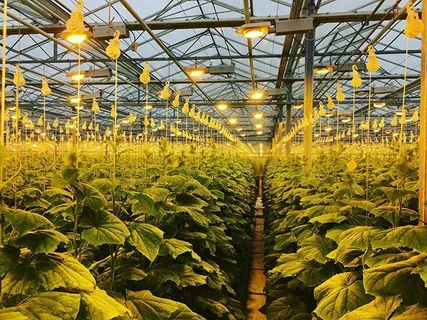Investors and entrepreneurs in the agricultural sector are increasingly seeking innovative technologies that align with sustainable practices. One such promising development is the advancement of automatic image recognition for greenhouse cultivation, driven by the ‘Know what you’re growing’ (Weet wat er leeft) project. This initiative, supported by HAS Green Academy, imec/OnePlanet, and Koppert Biological Systems, aims to provide a comprehensive overview of species in greenhouses by integrating various monitoring data.
In the past year, significant progress has been made in refining the automatic image recognition model used in greenhouses. One of the key challenges encountered was the impact of colored LED lighting on the model’s performance. Under specific lighting conditions, insects on yellow sticky plates were not being recognized accurately. A group of students from HAS Green Academy tackled this issue by experimenting with different lighting solutions. They discovered that using a strong external flash and adjusting the color balance in post-processing allowed insects to be recognized as effectively as they would be under white light. This approach proved more efficient than retraining the model to accommodate purple light.
Despite these improvements, field tests revealed some limitations in the model. In greenhouses growing roses, pot orchids, chrysanthemums, and cucumbers, the number of target pest species was lower than anticipated, and the presence of other species often led to incorrect identifications. Additionally, in some cases, the sheer density of insects made it difficult to accurately detect specific pests, such as thrips.
To address these issues, the project will focus on retraining the image recognition model using a new set of field photographs. This retraining is expected to significantly enhance the model’s ability to identify and track trends in pest populations, including thrips, whiteflies, aphids, and parasitic wasps. To simplify the analysis of these images and make the data more accessible, the app developed by imec will also be further refined. The insights gained will be integrated into the LetsGrow platform, allowing growers to make informed decisions based on real-time data.
In addition to improving image recognition from sticky traps, the project has incorporated another innovative tool: the Edapholog. This device uses heat to draw insects and mites from leaf material into a funnel, where they are filmed for further analysis. These films are now being used to train recognition models for various species, including Swirskii mites, Montdo mites, Carpoglyphus lactis (a feeding mite), and thrips larvae. The next phase of the project will involve testing the accuracy of these models and refining them for practical use.
The success of this project relies heavily on collaboration between students, researchers, and industry partners. The Vision workgroup, comprising members from HAS Green Academy, imec/OnePlanet, WUR, and Koppert Biological Systems, continues to push the boundaries of what can be achieved in sustainable pest management through technology. By enhancing automatic image recognition and integrating it with real-time monitoring tools, the project aims to help growers reduce pesticide use, improve crop yields, and support more sustainable greenhouse operations.










